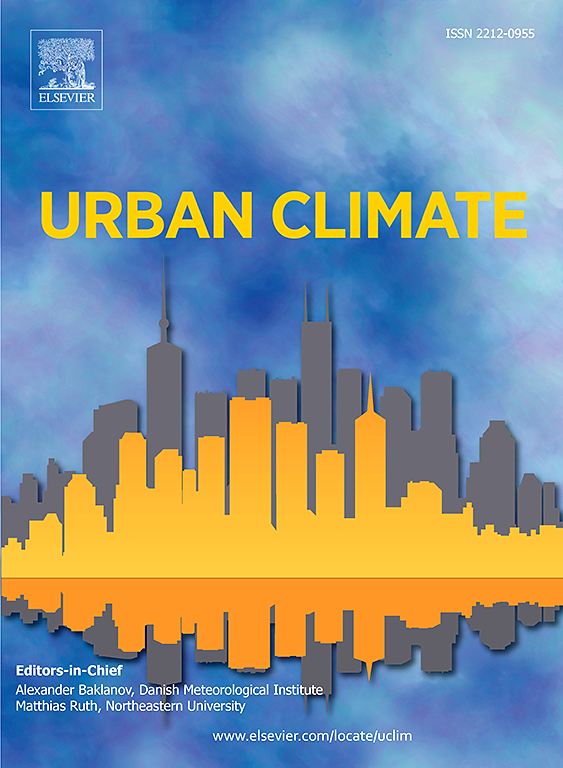Comparing aerosol sources in a metallurgy city: Evidence from low molecular weight organic acids in PM2.5 between 2012–2013 and 2021–2022
IF 6
2区 工程技术
Q1 ENVIRONMENTAL SCIENCES
引用次数: 0
Abstract
Understanding the decadal evolution of atmospheric pollutants is essential for evaluating environmental policies and their impact on air quality. This study examines changes in low molecular weight (LMW) dicarboxylic acids (diacids) and related compounds in PM2.5 from 2012 –2013 to 2021–2022 in Huangshi, a metallurgy city in China. PM2.5 and associated organic components, including total carbon (TC), LMW diacids, and α-dicarbonyls were halved over the decade. However, seasonal trends of diacids relative to TC remained similar, suggesting that anthropogenic, and biogenic emission activities and oxidation processes still strongly influence on organic species in the local PM2.5. During more recent years, we found increased relative abundances of short-chain diacids and related species (oxalic, malonic, succinic, glyoxylic, and pyruvic acids) in TC, whereas those of phthalic, terephthalic, adipic, azelaic, 9-oxononanoic acids and α-dicarbonyls decreased. These comparisons provide the first evidence for the decadal development of environmental policy, which caused a significant source change from anthropogenic to biogenic emissions along with photochemical aging of organic aerosols. We also suggest climate-related changes, including increased UV irradiation and ozone formation, resulting in an enhanced atmospheric oxidizing capability. This study will be useful for policymakers for the improvement of air quality and its outcomes in mining cities.

冶金城市气溶胶来源比较:2012-2013年和2021-2022年PM2.5中低分子量有机酸的证据
了解大气污染物的年代际演变对于评估环境政策及其对空气质量的影响至关重要。本研究考察了2012 -2013年至2021-2022年中国冶金重镇黄石市PM2.5中低分子量(LMW)二羧酸(diacids)及相关化合物的变化。PM2.5和相关的有机成分,包括总碳(TC)、低分子量二酸和α-二羰基,在过去十年中减少了一半。然而,相对于TC,二酸的季节变化趋势保持相似,表明人为和生物源排放活动和氧化过程仍然对当地PM2.5中的有机物种产生强烈影响。近年来,我们发现TC中短链二酸及其相关物种(草酸、丙二酸、琥珀酸、乙醛酸和丙酮酸)的相对丰度有所增加,而邻苯二甲酸、对苯二甲酸、己二酸、壬二酸、9-氧壬酸和α-二羰基的相对丰度则有所下降。这些比较为环境政策的十年发展提供了第一个证据,环境政策导致了从人为排放到生物排放的重大来源变化以及有机气溶胶的光化学老化。我们还认为,与气候相关的变化,包括增加的紫外线照射和臭氧形成,导致大气氧化能力增强。这项研究将有助于政策制定者改善矿业城市的空气质量及其成果。
本文章由计算机程序翻译,如有差异,请以英文原文为准。
求助全文
约1分钟内获得全文
求助全文
来源期刊

Urban Climate
Social Sciences-Urban Studies
CiteScore
9.70
自引率
9.40%
发文量
286
期刊介绍:
Urban Climate serves the scientific and decision making communities with the publication of research on theory, science and applications relevant to understanding urban climatic conditions and change in relation to their geography and to demographic, socioeconomic, institutional, technological and environmental dynamics and global change. Targeted towards both disciplinary and interdisciplinary audiences, this journal publishes original research papers, comprehensive review articles, book reviews, and short communications on topics including, but not limited to, the following:
Urban meteorology and climate[...]
Urban environmental pollution[...]
Adaptation to global change[...]
Urban economic and social issues[...]
Research Approaches[...]
 求助内容:
求助内容: 应助结果提醒方式:
应助结果提醒方式:


